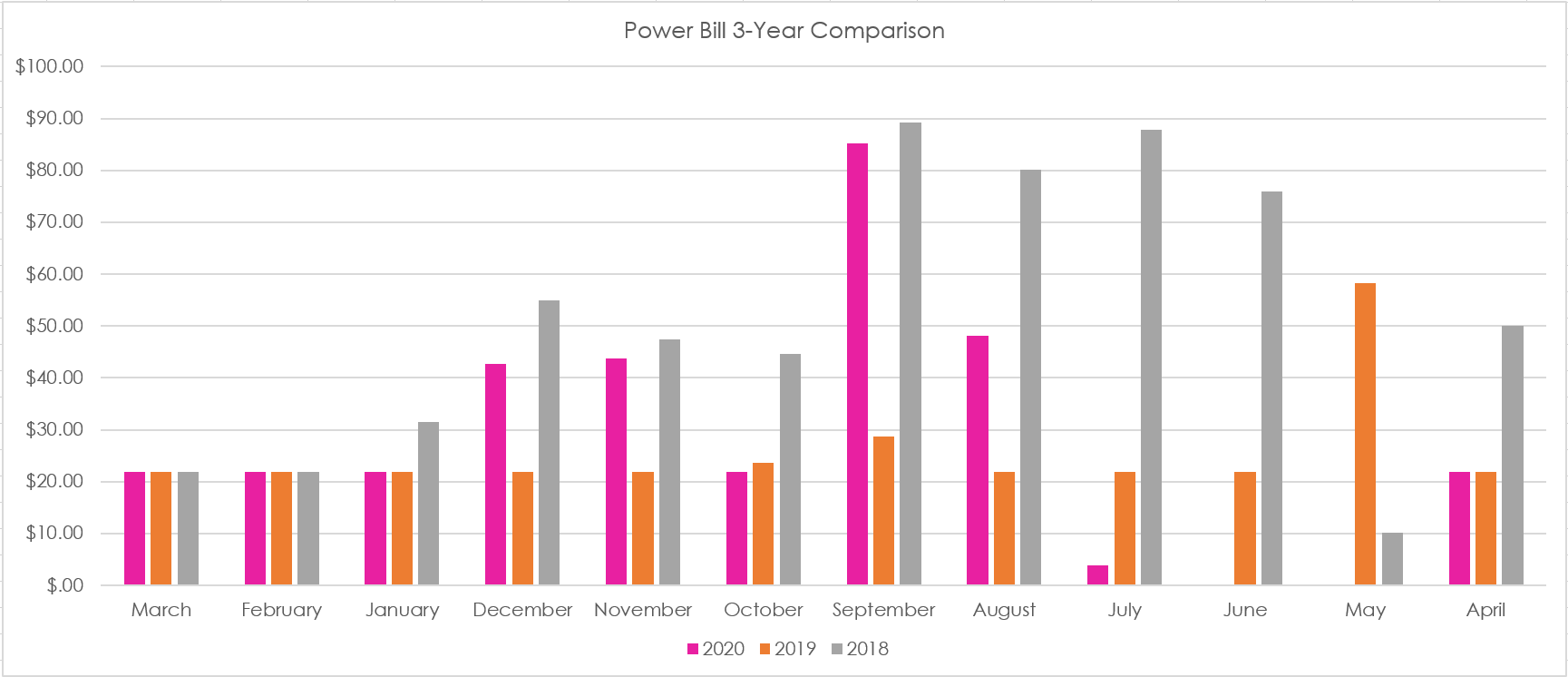How I Pay <$350 Per Year On My Power Bill
Living in Arizona has many benefits, not least of which is the year-round sunshine and hot weather. After living my entire life in New Jersey and weathering the Northeastern winters, summer in Arizona was a welcome change of pace. 100 degrees in dry heat feels like 90 with humidity. Besides, when the mortgage payment on your four-bed, two-bath house with an in-ground pool is the equivalent of a rental payment on a 400 square foot apartment with no yard, no laundry, and noisy neighbors, life is pretty sweet.
When I purchased my home there were solar panels already installed. My then boyfriend, now husband, and I were still living in New Jersey at the time and using the property as a vacation home. Since we were there for a few days once every other month, our power use was minimal. However, when we moved in May 2017, I started to wonder what it would cost to cover the rest of our power use by installing additional panels. We were also considering buying an electric or hybrid vehicle at the time and wanted to generate enough power to cover that as well. From April 2017 through March 2018 we spent $615.35 on power. Our highest bill was $89.30 in September 2017 and our lowest bill was $10.21 in May 2017 (that’s a bit of an outlier though as we weren’t even living in the home most of the month).
The panels were fully installed and turned on in June 2018. Our total cost was $7470. We received a $2241 federal tax credit and a state tax credit of $1000, which brought our net cost to $4229. We put the full $7470 on a 0% interest credit card and paid off the balance in equal installments of about $282 per month with additional lump sum payments when we received our tax refunds.
From April 2018 through March 2019 we spent $306.91 in power. Our bill was pretty consistent the whole year, with most months being charged $21.81, the minimum maintenance cost of our power company. From April 2019 through March 2020 we spent $332.60. In April we actually received a credit from the power company, which covered our May, June, and the majority of our July bill. In September our bill spiked to $85, due to an unseasonably cloudy and rainy month. It dipped back down in October, went up slightly in November and December and then equalized out in January, February and March.
Our power bill comparison between 2018, 2019 and 2020
One thing we recently found out is that the panels need to be cleaned periodically to generate their full power capacity. We’re hoping that once the cleaning is performed we’ll be able to generate additional power so we can continue to receive a credit from our power company in future years.
Given that we’ve saved about $300 per year the past two years, it looks like we’ll break even on our investment in about 14 years. The lifespan of a solar panel is estimated at 20-25 years. However, even after that time period it doesn’t stop generating power altogether, it just produces less than when it was new. With the additional impact of generating clean energy, I think we made the right choice for our lifestyle. I realize this will not be true of everyone as environment and current tax credits play a large role so I recommend you do your homework before committing to solar because it’s environmentally friendly.

